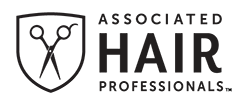.jpg) The importance of emotional intelligence in the hair industry, and how to emotionally educate yourself
The importance of emotional intelligence in the hair industry, and how to emotionally educate yourself
by Kate Kent, owner of Nice Hair in Milwaukee, and a leadership coach with Destroy the Hairdresser
When I chose to embark on a journey toward becoming a hairdresser, I had just graduated from art school. My artwork was abstract, but it was a representation of the relationship between our bodies and our minds, and how the two communicate and influence one another. The idea that our thoughts and emotions can influence our physical health, and also that physical ailments could alter our mental wellness, well, it all blew my mind. Creating art about it was just the tip of the iceberg.
Being immersed in hair, beauty, images, makeup, presentation, and perfection was a drastic shift from what I explored in the art world. After about 10 years in the industry, I started to question the industry and its intentions. I found this external pressure to fit into a beautiful and trendy package incredibly off-putting.
I began a journey through my own beauty stereotypes while working through this craft. I began asking myself and others more introspective questions: What is the industry’s purpose in relation to a human? What are clients seeking when they seek change to their external appearance? Why am I selling them so much shampoo? Why do I have to wear makeup to be a professional stylist? Who are my clients? What am I trying to create for them? What is a stylist’s real purpose??
Why is the beauty industry so emotional?
As an artist, all the art I created related to me and my journey. As a stylist, what we create is all about the other person: their journey and their story. We are the means. We are the channel. Their stories come to life through us. And yet, it is not simply what they want to look like. It’s what they want to feel like. It is emotional.
We hold our clients’ insecurities quite literally in the palm of our hands. It is a humbling, powerful, delicate experience. With the right or wrong color, cut, or words, we have the ability to change the course of their lives. Sometimes the course is wonderful . . . and sometimes the course highlights even more insecurities.
How do we feel as professionals, and as humans, when we bring up a client’s insecurities?
Insecure!
From artist, to beauty school student, to new stylist, to seasoned stylist, to educator, to independent stylist, to salon owner, I have navigated my own insecurities every single day. I’ve felt the deep lows and exuberant highs. I’ve tried to ignore my insecurities in hopes they will disappear on their own. They haven’t.
Why is the beauty industry so emotional?
What I really needed to confront was, why was I so emotional?
Ah yes, emotions. The most important concept I have learned to alter and support my career is emotional intelligence. Emotional intelligence is the key puzzle piece I needed to put all the art, beauty, feelings, insecurities, fear, career paths, energy, and purpose into perspective. Emotional intelligence means we can express how we feel clearly, and we can listen to another’s emotional experience without needing to change it. Listening, empathy, and clarity.
But we must make people happy!
.jpg) EQ takes a disciplined and compassionate level of self-awareness. Observing our emotions and seeing them as waves of information, rather than behaving because of them, takes practice and guidance. All emotions are important. Any negative emotions we feel are important pieces of information to pay attention to. It’s like natural remaining pigment. We don’t always see it on the surface of the hair, but we know it’s inside and it requires a certain level of attention. If we ignore it, well, orange hair sparks a lot of insecurities, doesn’t it? Self-awareness and this level of emotional intelligence is a lifelong practice. It never ends.
EQ takes a disciplined and compassionate level of self-awareness. Observing our emotions and seeing them as waves of information, rather than behaving because of them, takes practice and guidance. All emotions are important. Any negative emotions we feel are important pieces of information to pay attention to. It’s like natural remaining pigment. We don’t always see it on the surface of the hair, but we know it’s inside and it requires a certain level of attention. If we ignore it, well, orange hair sparks a lot of insecurities, doesn’t it? Self-awareness and this level of emotional intelligence is a lifelong practice. It never ends.
Not sure where to begin?
We have to start with ourselves and our own emotions.
Start by observing and documenting every single emotion you have for a few weeks.
When we understand ourselves, our insecurities, and our emotions more fully, we can meet our clients (students and employees too!) on a different level. We start to become more confident in how to approach all types of emotions because we’ve started to understand our own. Then, the delicate, fragile nature of holding others’ insecurities becomes less overwhelming. The future of our industry and our clients will require us to be more emotionally intelligent than ever.
The art I channeled all those years ago sent me on a decade-long, roundabout journey to discover emotional intelligence and I’m forever grateful. If you need a seasoned guide, I’m here for you.
